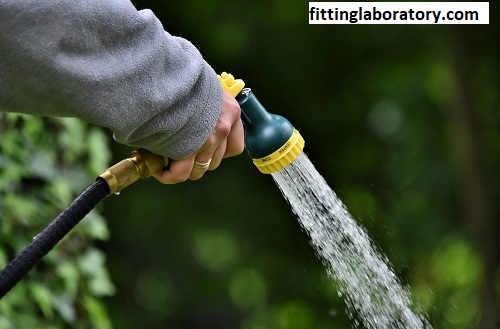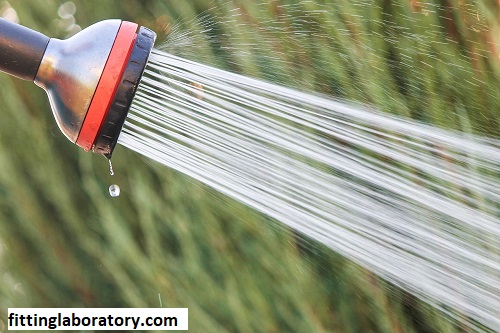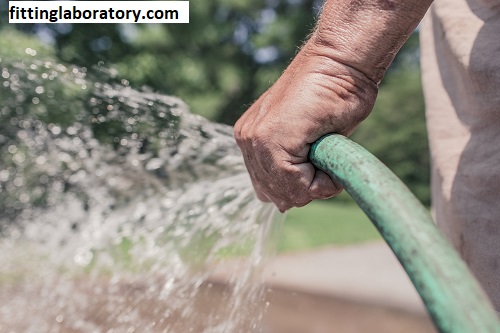Connect Hose Fittings: The ultimate guide to efficiency, safety, and versatility
Quick Connect Hose:
Quick Connect Hose is one of the most critical components when working with hoses. It therefore needs to fit their needs. Many industries require fitting that is not only safe and efficient but also convenient, and at Quick Connect we take pride in providing just that. No matter if it is a pneumatic system, irrigation setup, automotive application, or home appliance.

These fittings are fabricated to save time and enhance performance with quick and secure connections and disconnections. In the following paragraphs, we will cover the various types of quick-connect hose fittings, their advantages, their applications, and which one you should use for your needs. We’ll also answer some of the frequently asked questions about this subject.
What are Quick Connect Hose Fittings?
Quick Connect Hose:
Quick-connect hose fittings, otherwise called quick couplers, refer to the devices that facilitate easy or rapid connections and disconnections of hoses and tubes without the requirement of additional tools or the use of excess force. The reason behind such inventions is the need for a solid, leak-proof connection and the extent of use, in that it is used frequently or promptly in situations requiring the connection and disconnection of hoses which require frequent hook-ups and tear-downs.
In quick-connect hose fittings, the push-and-lock mechanism is the trademark. Typically used in a combination of a male and female part, these can be pushed together to lock and result in a very secure connection. You simply pull or depress a release mechanism to disengage. This design lends to reduced downtime wear and tear, and efficiency in maintenance process application for most hose fittings.
Types of Quick Connect Hose Fittings:
Quick Connect Hose:
There are several different types of quick-connect hose fittings. Each has been built for one specific use or industry. The following are some of the most common types.
1. Pneumatic Quick Connect Fittings
Quick-connect hose fittings are frequently applied in pneumatic systems, allowing for easier connection of air-powered tools and equipment to an air supply. This is typically utilized in an industrial environment, with applications in manufacturing and construction.
- Threaded Quick Connects: These are threaded onto the hose or pipe and can work ideally for pneumatic tools as a safe connection.
- Push-to-Connect Fittings: It is easy to install without any requirement of tools because the hose can be pushed into the fitting for quick pneumatic system connections.
- Automated Quick Connects: The most usage is in advanced pneumatic systems because this fitting has the capability of connecting and disconnecting through remote operation.
2. Automotive Quick Connect Fittings
For instance, in automotive applications, quick-connect hose fittings are usually used for fluid systems such as fuel, coolant, air conditioning, and systems used in inflating the tires. These make it easy for mechanics and auto technicians to attach and detach hoses during diagnostic testing or repairing a system and making fluid replacements not too hassle so much.
- Fuel Line Quick Connects: Modern vehicles have incorporated the use of quick-connect hose fittings to connect and disconnect fuel lines in a safe and fast way which eliminates leakage when disconnections happen.
- AC Quick Connects-In air conditioners: such quick connects are applied so that refrigerants can be easily added or removed without any risk to the system.
3. Garden and Irrigation Quick Connect Fittings
Quick Connect Hose:
Quick connect fittings are extensively used in gardening, irrigation, and other landscaping applications: these fittings are used for fast connectors for hoses to water spigots, sprinklers, drip, and other systems. They come in very handy for homeowners and gardeners who need to hook up several hoses fast and hassle-free.
- Standard Garden Hose Connectors: They are hose-to-faucet or hose-to-hose fittings that connect garden hoses. They are made of plastic and brass with common rolled-on threading, which seals for watertightness.
- Drip Irrigation Connectors: They use quick connect fittings in drip irrigation systems, which is a type of fitting that connects the tubing and emitters quickly for efficient water delivery.
4. Hydraulic Quick Connects
Hydraulic systems feature quick-connect hose fittings for connecting hoses carrying fluids in pressures as high as oil or hydraulic fluid. Such components may carry extreme pressures while ensuring a safe, drip-free connection for machinery and equipment in industrial, agricultural, and construction applications.
- ISO 16028 Fittings: Hydraulic quick-connect fittings are among the most popular types of industrial hydraulic parts. These feature flat faces for low leakage.
- Flat Face Connectors: These connectors avoid leakage on connecting and disconnection of a hydraulic system which involves fluid under pressure.
5. Food and Beverage Quick Connect
There are sanitary quick-connect fittings, which are provided for the food and beverage industries. These sometimes include special requirements to ensure safe and healthy fluid transfer. Their manufacturers majorly meet the many different standards regarding cleanliness for these fittings, and they are usually from stainless steel materials.
Sanitary Quick Connects: They are widely applied in breweries, dairies, and food production plants as easy discharging of liquids such as milk, juices, or beer is easily provided. They have a sanitary design with no contamination allowance and are very easy to clean.
Advantages of Quick Connect Hose Fittings:
Quick Connect Hose:
Quick connect hose fittings offer numerous advantages across different industries that make them the most preferred devices amongst professionals and hobbyists. The important merits are as follows:
1. Saving of Time
Quickly connected hose fittings allow connecting and disconnecting a hose in the snap of a finger, which is its most significant advantage. This is exceedingly important, especially in places where rapid connection and disconnections can be of utmost importance, particularly if connections and disconnections frequently happen.
2. Ease of Operation
Quick connects eliminate the additional time-consuming use of wrenches or pliers for operators to do their tasks while not having to look for wrenches or pliers. This convenience will result in fewer hours of downtime and greater productivity.

3. Leak-Free Connections
Quick Connect Hose:
The quick-connect fittings are designed to create a tight, secure seal. This enables the prevention of leakages, possible wastes of materials, contamination, or even hazards during safety. Most quick-connect fittings are designed in such a manner that air cannot enter pneumatic lines or hydraulic systems.
4. Reduced Wear and Tear
These hose fittings differ from the conventional hose fittings, which have to be screwed and unscrewed. The threads of such hose connections can be damaged or the seals could get ruined after some time. Quick connects have fewer moving parts and are so engineered to last long and avoid damage chances in repeated connections.
5. Safety
The users can, therefore be able to avoid the risk of dealing with fluids that are either hot, pressurized, or hazardous. The fit is automatic sealing when connected, so the possibility of spillage or leakage by accident causing injuries or damaging equipment is highly minimized.
6. Versatility
Available in an extensive range of sizes, shapes, and materials, quick-connect hose fittings can easily be used on everything from high-pressure hydraulic systems to low-pressure garden irrigation setups.
Choosing the Right Quick Connect Hose Fitting:
Quick Connect Hose:
Choosing the right quick connect fitting for the proper performance of your specific application. Here are some factors to consider when selecting quick-connect hose fittings:
1. Material Compatibility
The material of the fitting should be compatible with the fluid or gas it will handle. Most fittings use four materials typically: stainless steel, brass, aluminum, and plastic. Brass is best used for garden hoses, while stainless steel is ideal for high-pressure hydraulic systems or food-grade applications.
2. Pressure Rating
The quick connect fitting should be rated to the pressure it will see. Hydraulic and pneumatic environments, in particular, require fittings rated for high-pressure environments. Always check the manufacturer’s specifications for maximum pressure ratings.
3. Size and Thread Type
Quick Connect Hose:
The diameter shall be the size of the hose diameter, and the thread type shall be compatible with its corresponding male or female-threaded one. Standard sizes are 1/4\”, 1/2\”, and 3/4\“, but some applications do require specific sizes.
4. Locking Mechanism
There are different types of locking mechanisms available in quick-connect fittings. Some types come with a push-to-lock or threaded lock type, while others come with the cam-lock type. There are several types to be chosen from to suit ease of use and security needs under diverse work environments.
5. Environmental Factors
Determine the installation environment: The installation environment may determine your choice of fitting, depending on the extreme temperatures or corrosive fluids to which the fitting will be exposed. In such cases, then choose materials and designs that are resistant to such factors, such as corrosion-resistant stainless steel or special rubber seals.
General Applications for Quick Connect Hose Fittings:
Quick Connect Hose:
Quick connect hose fittings are popularly applied in the following industries and applications:
- Industrial Manufacturing: Many pneumatic systems, air-powered tools, and machinery use quick connects for easy assembly and disassembly.
- Automotive: Applications of quick-connect hose fittings include the fuel system, tire inflators, air conditioning, and many more.
- Agricultural: Irrigation systems, water pumps, and fertilizer application systems often utilize quick connects.
- Food and Beverage: Brewery, dairy, and food processing plants require sanitary quick connects.
- Home and Garden: Applications of quick-connect hose fittings include lawn care, sprinkler systems, and garden hoses.
Quick Connect Hose Fitting FAQs:
Quick Connect Hose:
1. What are the major types of quick-connect hose fittings?
The major types include pneumatic, hydraulic, automotive, irrigation, and food-grade quick connects, each being designed for specific applications and industries.
2. Is the quick connect fitting a reusable one?
Yes, the quick connect fitting is normally reusable, but only when they have not been hurt or worn out. Then, even though they may be saved for quite a long period if used properly with proper maintenance.
3. Can quick-connect hose fittings be utilized for high-pressure applications?
Yes, quick-connect fittings do come in designs suitable for high-pressure applications, especially in hydraulic and pneumatic systems.
4. What types of materials are used for quick-connect hose fittings?
Quick connect hose fittings come in all sorts of materials that would be used for the application: stainless steel, brass, aluminum, plastic, composite, etc.
5. How do I maintain my quick connect hose fittings?
Check periodically for wear, leaks, and debris. Clean and lubricate fittings as necessary to provide a problem-free and long service life. Check seals and replace them if bad.

Conclusion:
Quick Connect Hose:
Quick connect hose fittings are an absolute must-have for a wide range of industries, proving themselves to be invaluable for unprecedented convenience, safety, and efficiency. Whether the application is one involving water, air, oil, or chemicals, these fittings save time, minimize leaks, and add to productiveness. Understanding the variety of quick connects that exist will best support the needs of operations in saving space in processes and ensuring reliability in systems long-term.